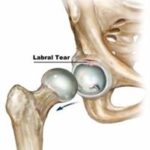What is Sinus Tarsi
A small bony canal that is present between the talus and the calcaneum is called Sinus Tarsi. It contains structures that contribute to the stability and Proprioception of the Joint. Damage to the sinus tarsi can be caused by Overuse or an Ankle sprain.
What are the causes of Sinus Tarsi Syndrome?
Sinus tarsi syndrome mostly occurs after a lateral Ankle sprain or recurrent Ankle sprains which consequently results in injuries of the interosseous and cervical ligaments present in the Sinus Tarsi.
As a result of injury to sinus tarsi ligaments, an inflammation of the synovial recess in the sinus tarsi occurs. This happens in 70% of the cases of recurrent lateral ankle sprain cases.
The sinus tarsi syndrome can also occur as a compression injury in patients with people flat feet. The talus and calcaneum are pressed together as a result of the deformation. This causes the bone-to-bone contact of the talus and calcaneum, with inflammation or arthritis in the sinus.
Symptoms
It is difficult to pinpoint the exact location of the pain by the patient. The usual area of pain is on the outer aspect of the ankle near the lateral malleolus. Tenderness can be elicited at the sinus tarsi opening near the outer side of the ankle.
Inversion of the Ankle may reproduce the Pain.
To confirm the diagnosis an anesthetic injection can be administrated into sinus tarsi which will relieve the symptoms and allowing normal function if not then some other structure is at fault.
The pain is most severe when standing, walking on uneven ground, or during the movements of supination and adduction of the foot.
People suffering from Sinus tarsi syndrome also have a feeling of instability (functional instability) in the hindfoot.
Moreover, the loss of stability in the ankle will allow a greater range of motion to the subtalar joint.
Differential Diagnosis:
The common pathologies that may give the same pain characteristics or symptoms are:
- Ankle sprain
- calcaneal fracture
- talar fracture
- Peroneal Tendonitis
- subtalar joint arthritis
- Tarsal Tunnel Syndrome
Diagnosis of the sinus tarsi syndrome is usually made by excluding other foot pathologies.
- MRI is the best method to visualize the structure within the sinus tarsi, especially the interosseous and cervical ligaments. The MRI findings may also include alterations in the structure of the interosseous and cervical ligaments and degenerative changes in the subtalar joint.
Treatment Of Sinus Tarsi Syndrome:
The initial treatment can be abbreviated as PRICE – Protection, Rest, Ice, Compression, and Elevation.
- The patient may have a painful limp, so the patient needs to be rested from complete weight-bearing activities.
- Ice can be applied to reduce pain and swelling. Apply for 10-15 minutes every 3 to 4 hours during the initial inflammatory phase.
- Anti-inflammatory medication may help reduce pain and swelling. Supportive crepe bandage can be applied to restrict ankle movement.
- Other helpful physiotherapy modalities and techniques can be used to reduce pain.
- Mobilization of the joints of the ankle and foot especially the subtalar joint is an important part of treatment. A specialized manual therapist should be able to mobilizations the foot and ankle joint appropriately for sinus tarsi syndrome.
- Correction of biomechanical problems such as overpronation should be done. This may help relieve the narrowing of the sinus tarsi canal. An orthotic insole to correct biomechanical foot problems may be needed. It is important to have correct supportive running shoes.
- Stretching and strengthening exercises for the ankle to normalize the muscle balance around the ankle are very important to regain the complete range and strength of the ankle.
- Proprioceptive and balance exercises on a wobbleboard to enhance the joint sense of the patient. If an individual/ athlete has been out of training because of the injured ankle then the proprioception or coordination of the ankle will be disrupted. Balancing exercises and using a wobbleboard can strengthen proprioception and reduce the chances of re-injury.







